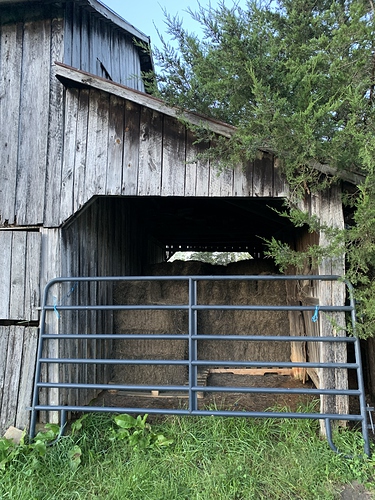When my hay was tested at the beginning at August, the moisture percent was 7.9%. I just saw that the hay stored in the lean-to (open on both sides, roof overhead), has mildew growing on the outside. Some hay left over in mangers also has mildew or mold growing on the outer surface.
The roof is not leaking. The hay never got wet directly from rain. The small square bales are up off of the ground. Hay put up in this space two years ago is still in good shape and usable. I’m in VA and we had a couple weeks of extreme rain from Hurricane Helene. Lots of humidity.
What do I do now? I can’t imagine the hay supplier will replace it. Can I salvage it? And how can I prevent this in the future?

 Nooooo!!!
Nooooo!!!  I start stressing in July if I don’t have my hay lined up.
I start stressing in July if I don’t have my hay lined up.  We were drought (you’re Eastern Shore, right? I’m central VA), so I was REALLY stressing. And I’ve never lost hay in storage before, even the bottom row. I can imagine the humidity is an even bigger problem on the shore.
We were drought (you’re Eastern Shore, right? I’m central VA), so I was REALLY stressing. And I’ve never lost hay in storage before, even the bottom row. I can imagine the humidity is an even bigger problem on the shore.


